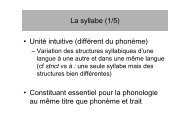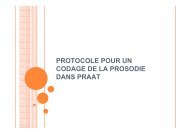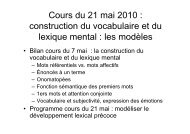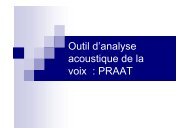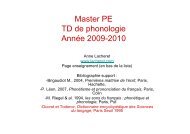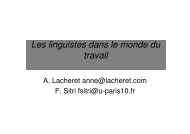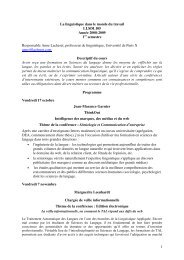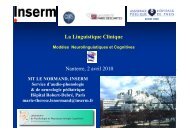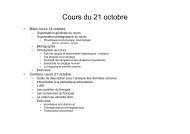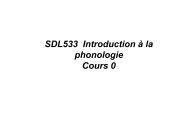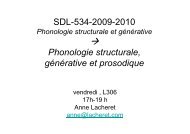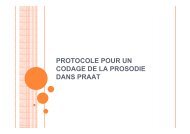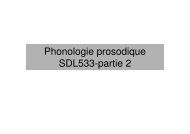You also want an ePaper? Increase the reach of your titles
YUMPU automatically turns print PDFs into web optimized ePapers that Google loves.
mirror to the character. The mirroring function has broader application to Cherubino.<br />
In "Non più andrai," for example, Figaro calls him "Narcisetto, Adoncino d’amor"<br />
(Little Narcissus, little Adonis of love). A "farfallone amoroso" (amorous butterfly)<br />
reminiscent of Puck, he sets romantic imbroglios in motion but emerges unscathed.<br />
Many consider him a dramatic pivot for the entire opera, even when he is not present.<br />
Sexually Cherubino embodies the androgyny of the trousers role, yet stirs strong<br />
desires in others. Kierkegaard recognized Cherubino’s subversive quality, in his essay<br />
"The Immediate Erotic Stages or the Musical-Erotic," from Either/Or. Cherubino<br />
represents the first of three stages of desire, with Papageno the second and Don<br />
Giovanni the third. We might also characterize Cherubino as a young Count. Viewed<br />
this way, the Count’s fears of Cherubino are justified.<br />
Cherubino airs strong desires in "Non so più." In Ponnelle’s hands the aria<br />
recalls Conrad’s idea, mentioned at the start, on the operatic soliloquy in film as<br />
consciousness overheard. Here, Cherubino dips in and out of consciousness as interior<br />
singing alternates with exterior singing. Susanna appears with him in the scene, as in<br />
the Mozart-DaPonte version. But in the film she hears only the exterior voice. The two<br />
types of singing accord with Cherubino’s inability to sustain a coherent thought. It<br />
also relates to the formal structure of the music, a modified rondo. While interior and<br />
exterior modes do not stick slavishly to the form, the arrangement offers a new way of<br />
expressing the idea of alternation that underlies a rondo.<br />
Cherubino’s consciousness through voice is enacted as a circle dance with<br />
camera and space. Unlike "Vedrò," this aria is shaped by spatial movement, and a<br />
hand-held camera in much of it imparts a nervous quality to the character. Like<br />
"Vedrò," point-of-view exaggerates subject positioning and means that the gaze works<br />
closely with the voice. But here there is no sustained gaze; looking is jumpy or<br />
unfocused. Susanna behaves differently from the observer (Figaro) in "Vedrò," for she<br />
reacts to what she hears and sees. When we see Cherubino from her vantage point, the<br />
image seems to be a projection of his thoughts rather than what she really sees. The<br />
camera records the psychology of Cherubino’s consciousness more than Susanna’s<br />
reactions. As for Cherubino, his anguish suggests a persona imprisoned in his body<br />
and voice. The voice occasionally escapes beyond the barrier of the body—when his<br />
singing is explicit—but it seems squelched much of the time. Near the end, when<br />
Cherubino utters "E se non ho chi m’oda, Parlo d’amor con me" (And if no one hears<br />
me, I speak of love to myself), the voice surfaces but the character ends up more<br />
imprisoned, against a wall. He is isolated and the voice is trapped in him—<br />
appropriately, for he images "speaking of love to himself" (code words for<br />
masturbation?) if no one is there.<br />
What does Cherubino hear of what he sings? He hears it all, with little<br />
distinction between interior and exterior voice as he slips from one to the other. The<br />
aria resembles a fevered dream—a sexual dream, perhaps—and the consciousunconscious<br />
voice reflects an irrational core. Cherubino’s voice roams, within his<br />
persona, in search of a secure subjective anchor. It desires, but its object is not to be<br />
found. This is a familiar notion, for it echoes Kierkegaard’s ideas about the<br />
elusiveness of desire. Thus Ponnelle’s deployment of cinematic voice reinscribes<br />
Kierkegaard’s Romantic views on Cherubino and his relation to the erotic. More<br />
generally it challenges the operatic voice as sign of an integral subjectivity.<br />
71



